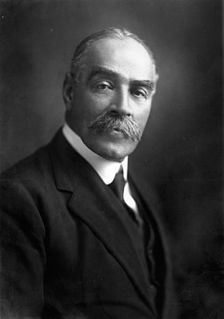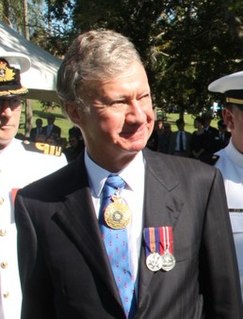
Goombungee War Memorial is a heritage-listed memorial at Hartwig Street, Goombungee, Toowoomba Region, Queensland, Australia. It was built in 1920 by R C Ziegler and Son. The architect was Harry Marks. It was added to the Queensland Heritage Register on 21 October 1992.

Greenmount War Memorial is a heritage-listed memorial at Ramsay Street, Greenmount, Toowoomba Region, Queensland, Australia. It was unveiled 11 December 1922. It was added to the Queensland Heritage Register on 21 October 1992.
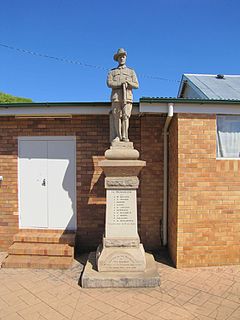
Westbrook War Memorial is a heritage-listed memorial at 114 Toowoomba Road, Westbrook, Toowoomba Region, Queensland, Australia. It was constructed in 1922 by Toowoomba masonry firm Bruce Brothers, and lies adjacent to the Westbrook Public Hall, which it predates. It stands 4.2 metres (14 ft) high, and consists of a statue of a digger atop a sandstone pedestal and base. The memorial contains the names of the 10 local men who died during World War I on the front face, and the 37 who served on the side faces. It was added to the Queensland Heritage Register on 21 October 1992.

Boer War Memorial is a heritage-listed war memorial at Crescent Street, Gatton, Queensland, Australia. It was designed by William Hodgen and produced by Toowoomba mason William Bruce. It was built in 1908, and was unveiled on 3 August by Governor of Queensland, Lord Chelmsford. The memorial honours four local men who died in or as a result of the war, and is one of only three known Boer War memorials in Queensland. It is also known as the Fallen Soldiers Memorial and the South African War Memorial.
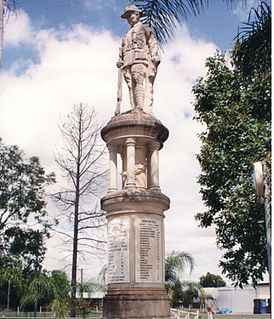
Forest Hill War Memorial is a heritage-listed memorial at Gordon Street, Forest Hill, Lockyer Valley Region, Queensland. Australia. It was built in 1921. It is also known as Forest Hill Soldiers Memorial. It was added to the Queensland Heritage Register on 21 October 1992.

Beaudesert War Memorial is a heritage-listed memorial at William Street, Beaudesert, Queensland, Australia. It was built from 1919 to 1921. It was added to the Queensland Heritage Register on 21 October 1992.

Boonah War Memorial and Memorial Park is a heritage-listed memorial at Park Street, Boonah, Scenic Rim Region, Queensland, Australia. It was built from 1920 to 1922. It was added to the Queensland Heritage Register on 21 October 1992.
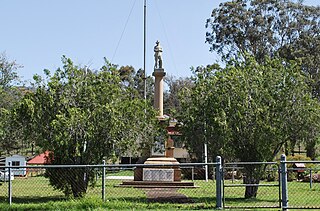
Maroon War Memorial & Memorial Enclosure is a heritage-listed memorial at Boonah - Rathdowney Road, Maroon, Scenic Rim Region, Queensland, Australia. It was designed and built in 1920 by Frank Williams and Co. It was added to the Queensland Heritage Register on 21 October 1992.
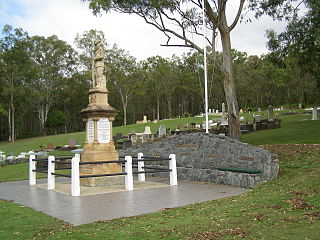
Pimpama & Ormeau War Memorial is a heritage-listed memorial at Pacific Highway, Pimpama, Queensland, Australia. It was built in 1919. It was added to the Queensland Heritage Register on 21 October 1992.
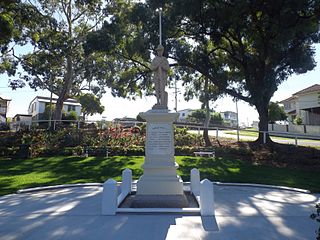
Manly War Memorial is a heritage-listed memorial at 184 Carlton Terrace, Manly, City of Brisbane, Queensland, Australia. It was built from 1920 to 1921. It is also known as Ferguson Street Reserve, Manly Dam, and Soldiers Memorial Park. It was added to the Queensland Heritage Register on 21 August 1992.

Oxley War Memorial is a heritage-listed memorial at 1218 Oxley Road, Oxley, Queensland, Australia. It was built in 1920. It is also known as Oxley Memorial Park and Oxley Place. It was added to the Queensland Heritage Register on 4 July 2006.

Ipswich Railway Workshops War Memorial is a heritage-listed memorial at the North Ipswich Railway Workshops, North Street, North Ipswich, City of Ipswich, Queensland, Australia. It was designed by Vincent Price and built in 1919. It was added to the Queensland Heritage Register on 21 October 1992.

Brooweena War Memorial is a heritage-listed memorial at Smith Crescent, Brooweena, Fraser Coast Region, Queensland, Australia. It was built in 1922 by F W Webb. It was added to the Queensland Heritage Register on 21 October 1992.

Howard War Memorial is a heritage-listed memorial at William Street, Howard, Fraser Coast Region, Queensland, Australia. It was built in 1921. It was added to the Queensland Heritage Register on 21 October 1992.
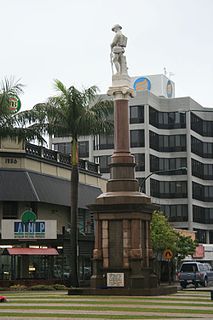
Bundaberg War Memorial is a heritage-listed memorial at Bourbong Street, Bundaberg Central, Bundaberg, Bundaberg Region, Queensland, Australia. It was designed by Frederic Herbert Faircloth and built from 1920 to 1921 by Anselm & Odling (Sydney). It was added to the Queensland Heritage Register on 21 October 1992.
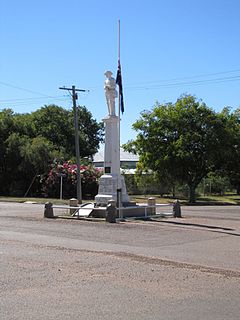
Aramac War Memorial is a heritage-listed memorial at Lodge Street, Aramac, Barcaldine Region, Queensland, Australia. It was designed and built by F M Allan in 1924. It was added to the Queensland Heritage Register on 21 October 1992.

Cairns War Memorial is a heritage-listed memorial at The Esplanade, Cairns, Cairns Region, Queensland, Australia. It was built in 1925. It was added to the Queensland Heritage Register on 21 October 1992.
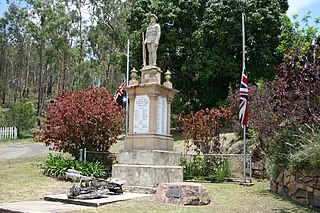
Herberton War Memorial is a heritage-listed memorial at Myers Street, Herberton, Tablelands Region, Queensland, Australia. It was designed and built by Andrew Lang Petrie and Son in 1922. It was added to the Queensland Heritage Register on 21 October 1992.

Dalby War Memorial and Gates is a heritage-listed memorial at Patrick Street, Dalby, Western Downs Region, Queensland, Australia. It was designed and built in 1922 by Harry Shill and British firms. It was added to the Queensland Heritage Register on 21 October 1992.

The Digger Statue is a heritage-listed memorial at 57 Heeney Street, Chinchilla, Western Downs Region, Queensland, Australia. It was designed by Andrew Lang Petrie and built in 1919 by A L Petrie & Son. It is also known as Chinchilla WWI Memorial and Chinchilla Soldier Statue. It was added to the Queensland Heritage Register on 1 August 1999.








